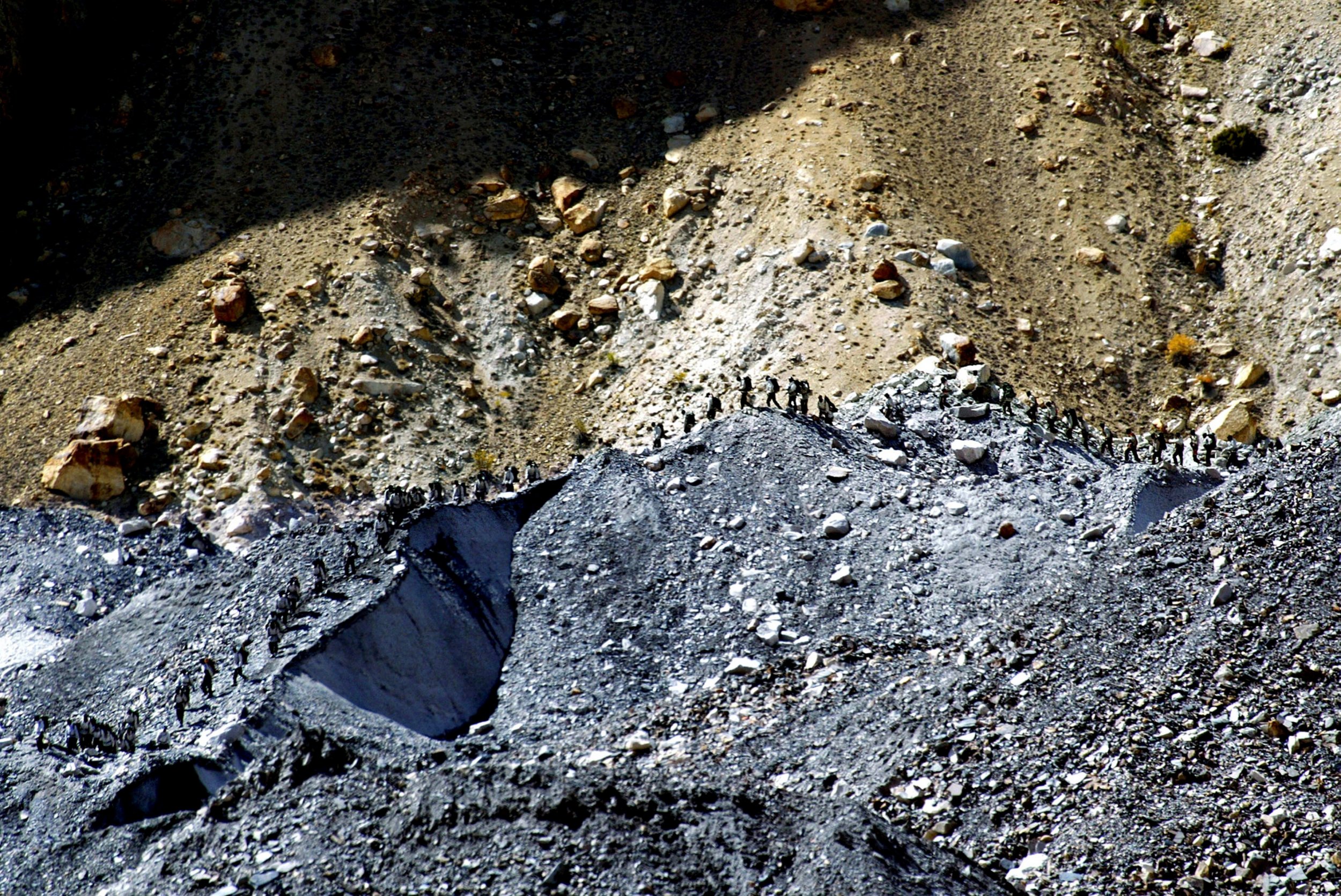
This article first appeared on the Riding the Elephant site.
Updated | It seems the most pointless military exercise in the world. Yet in the days since February 3, when 10 Indian soldiers were hit by an avalanche and killed on the Siachen Glacier some 20,000 feet up in the Himalayas, it is clear there is no prospect of the 32-year-old standoff in the area between India and Pakistan ending in the foreseeable future.
Five days after the avalanche, one of the soldiers was discovered still alive under 35 feet of snow. He died in a hospital on Thursday, after a national outpouring of grief and a visit to his bedside by Narendra Modi, the Indian prime minister.
Along with the grief and extensive media coverage saluting India's "brave hearts," military voices have emerged arguing that the emotion should not lead to India's troops being withdrawn, basically because Pakistan has not agreed to a border line, and because relations with China are making the area increasingly sensitive. Pakistan reacted to the deaths by saying that a settlement should be reached quickly, but Manohar Parrikar, India's defence minister, said today that "holding our presence in Siachen is very important."
No shots have been fired since a cease-fire was agreed to between India and Pakistan in 2003, but soldiers continue to die because of the conditions. With temperatures averaging minus 24 degrees centigrade and dropping sometimes to minus 50, they suffer from hypothermia and frostbite and, till relatively recently, the Indian troops were ill equipped to cope.
India has lost 33 soldiers since August 2012, when Parliament was told that the death toll was 846 since action began in 1984. In 2012, 129 Pakistani soldiers and 11 civilians were buried in an avalanche at a camp near the glacier.
The financial price is also high—about Rs7 crore (just over $1 million) a day for India, according to reports, because of the high costs of airlifting supplies by helicopter.
Indian politicians often talk about ending the impasse. Manmohan Singh, the former prime minister, visited the glacier in 2005 and proposed—unrealistically—making it a "mountain of peace."
Proposals have emerged at various times from "track 2" behind-the-scenes consultations for a settlement as a "confidence-building measure" between the two countries that would also include resolving a disputed section of coastline known as Sir Creek, between India's state of Gujarat and Pakistan's province of Sind.
There were formal talks in 2012 after the Pakistan avalanche, but the defense establishments objected—in India saying, as they have this week, that the cause that led to such sacrifices cannot be thrown away.
"Siachen has become embedded in the Indian public consciousness as a symbol of national will and determination to succeed against all odds," a retired Indian general said this week. "Siachen has acquired a sanctity of its own, which is part folklore, part military legend, part mythology and a substantial measure of national pride."
This is the only undemarcated area between the two countries (along with Sir Creek). There is a defined but disputed 500-mile Line of Control (LoC) in Kashmir. This is administered as a temporary arrangement, and there is regular firing between the two countries and loss of life. South of that is an undisputed 1,400-mile formal international border running down to the Arabian Sea.
The LoC was drawn on the basis of land occupied by both countries, but neither side had any presence in the uninhabited area farther north to Siachen, so this was not demarcated. Pakistan (and apparently the U.S.) thought the line would continue eastward to the Karakoram Pass with China (not to be confused with the quite separate Karakoram Highway to the west that links Pakistan with China across the Khunjerab Pass).
That would have taken Siachen away from India, which, along with the joint Indo-Pak LoC demarcation process, thought the line should go northward, thus officially giving it the glacier.
The trouble started in 1984, when Pakistan was dispatching groups of Japanese and other mountaineers to the area. India suspected Pakistan's motives and mobilized its army, as did Pakistan—I was on holiday in the area during the summer of 1984 and saw helicopters flying off to the glacier from Skardu in Pakistan's Northern Areas.
India is holding the dominating Saltoro Range to the west of Siachen, which gives it control of the glacier. Understandably, from a military point of view, it does not want to abandon that position without Pakistan agreeing to a demarcated line, which Pakistan, presumably encouraged by China, refuses to do.
To a bystander, it seems a pointless confrontation on the world's highest so-called battlefield. And so it would be if China was not increasingly showing interest in the area, including the disputed territory of Aksai Chin, which was part of the two countries' brief 1962 border war, in which India was defeated.
India and Pakistan have been at loggerheads ever since the partition in 1947, when they became independent of Britain. They have fought three wars and one near-war (at Kargil in Kashmir in 1999). Successive prime ministers have dreamed of settling the differences but have failed. Modi's recent attempts with Nawaz Sharif, the Pakistani prime minister, have floundered following last month's attack on India's Pathankot air base.
Pakistan's army does not seem to want a settlement of the issues and the militant Islamic organizations based there certainly do not. Neither does China, which has a considerable hold over what Pakistan does.
The Siachen Glacier standoff is a significant part of that puzzle, so there is no chance that the Indian troops can leave anytime soon.
Update: This article has been updated to include Pakistan's reaction to the deaths.
John Elliott is the author of the book Implosion: India's Tryst With Reality (HarperCollins India).
Uncommon Knowledge
Newsweek is committed to challenging conventional wisdom and finding connections in the search for common ground.
Newsweek is committed to challenging conventional wisdom and finding connections in the search for common ground.
About the writer
To read how Newsweek uses AI as a newsroom tool, Click here.








